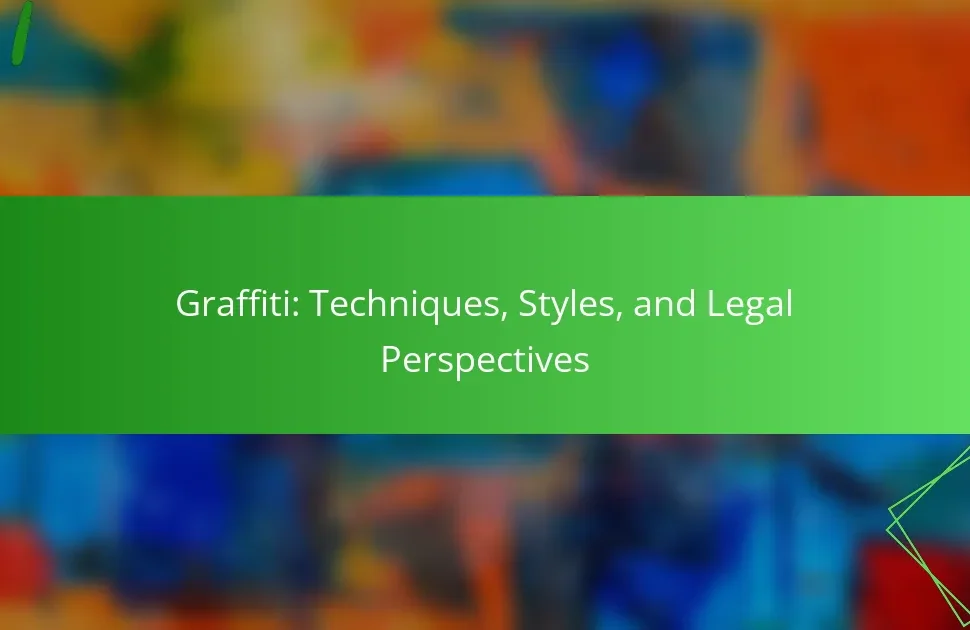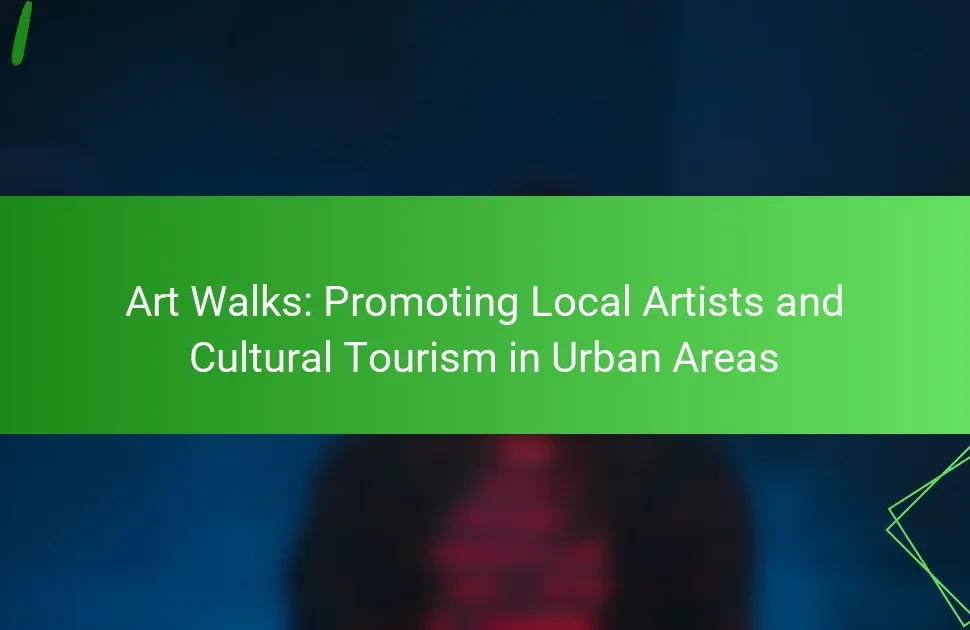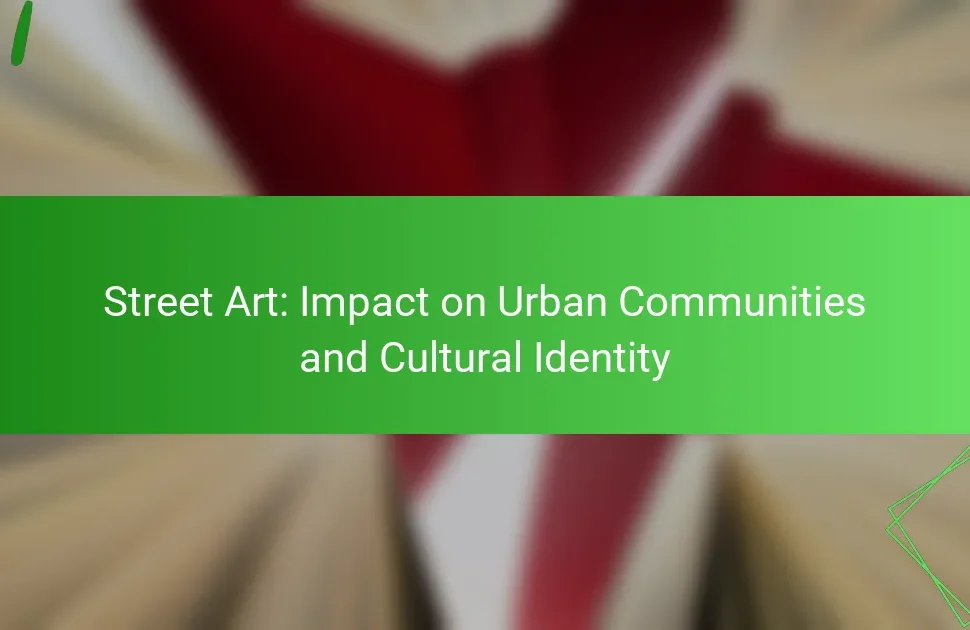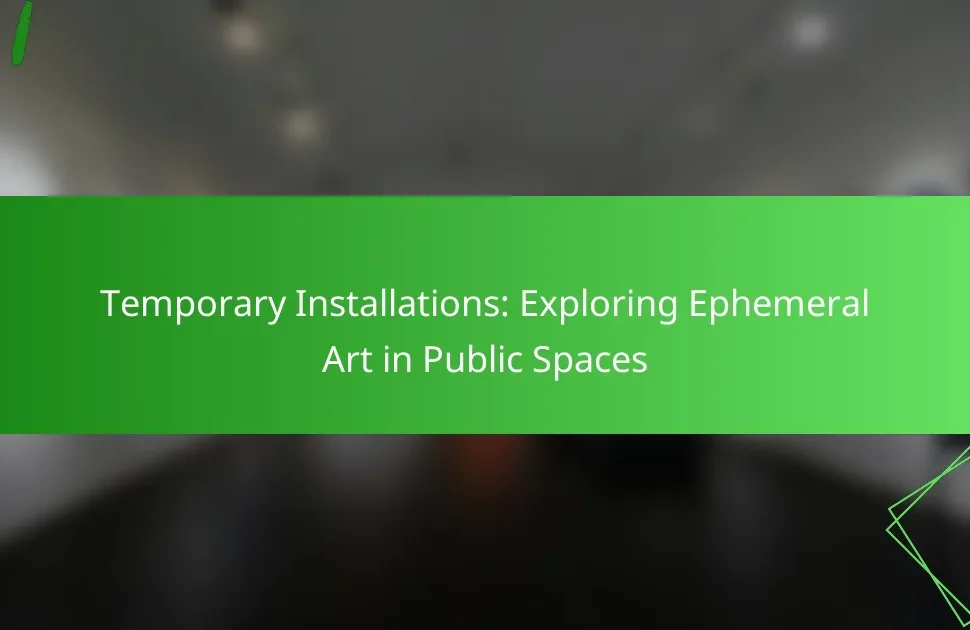Urban art collectives play a crucial role in fostering cultural exchange and driving artistic innovation. They create inclusive spaces for diverse artistic expression and encourage collaboration among artists. These collectives face challenges such as funding limitations and regulatory restrictions while enhancing community engagement. Their unique attributes, such as adapting to urban environments and focusing on social justice themes, further amplify their impact on local economies and cultural landscapes.

How do urban art collectives foster cultural exchange?
Urban art collectives foster cultural exchange by creating inclusive spaces for diverse artistic expression. They facilitate collaboration among artists from various backgrounds, enhancing cultural dialogue. These collectives often host events showcasing local talent, which attracts broader audiences. As a result, they promote understanding and appreciation of different cultures through art.
What roles do collaboration and community play in urban art collectives?
Collaboration and community are vital in urban art collectives as they foster creativity and cultural exchange. These collectives thrive on shared ideas, enabling artists to innovate and push boundaries. Community involvement enhances visibility and support for local artists, creating a sense of belonging. Additionally, collaborative projects often reflect diverse perspectives, enriching the artistic landscape. Through this synergy, urban art collectives become catalysts for social change and cultural dialogue.
Which cultural events showcase the influence of urban art collectives?
Urban art collectives influence cultural exchange through various events like festivals, exhibitions, and community projects. These events showcase diverse artistic expressions and foster collaboration among artists, enhancing cultural dialogue. Notable examples include the Mural Festival in Montreal, which highlights large-scale street art, and the Pow Wow Hawaii festival, celebrating local and international artists. These gatherings reflect urban art’s unique attributes, such as its ability to transform public spaces and engage local communities.

In what ways do urban art collectives drive artistic innovation?
Urban art collectives drive artistic innovation by fostering collaboration, encouraging diverse perspectives, and engaging local communities. They create platforms for experimentation, allowing artists to push boundaries and explore new mediums. This collective approach often leads to unique, site-specific works that reflect cultural narratives and social issues. Additionally, urban art collectives facilitate cultural exchange by connecting artists from different backgrounds, enhancing the richness of the urban art scene.
How do urban art collectives incorporate technology into their practices?
Urban art collectives integrate technology to enhance creativity and community engagement. They utilize digital platforms for collaboration, enabling artists to share ideas and resources globally. Augmented reality is often employed to create immersive experiences, allowing viewers to interact with artworks in innovative ways. Additionally, social media serves as a vital tool for promotion, helping collectives reach wider audiences and foster cultural exchange. Data analytics can also inform artistic decisions, revealing audience preferences and trends. By embracing technology, urban art collectives push the boundaries of traditional art practices and drive artistic innovation.
What are the emerging trends in urban art influenced by collectives?
Urban art collectives are increasingly fostering cultural exchange and artistic innovation through collaborative projects. These collectives promote diverse voices and encourage cross-disciplinary practices. Emerging trends include the use of technology, such as augmented reality, to enhance viewer engagement. Additionally, many collectives focus on social issues, creating art that addresses community concerns and promotes dialogue. The blending of styles and cultural influences is also notable, leading to unique artistic expressions that reflect a global perspective.
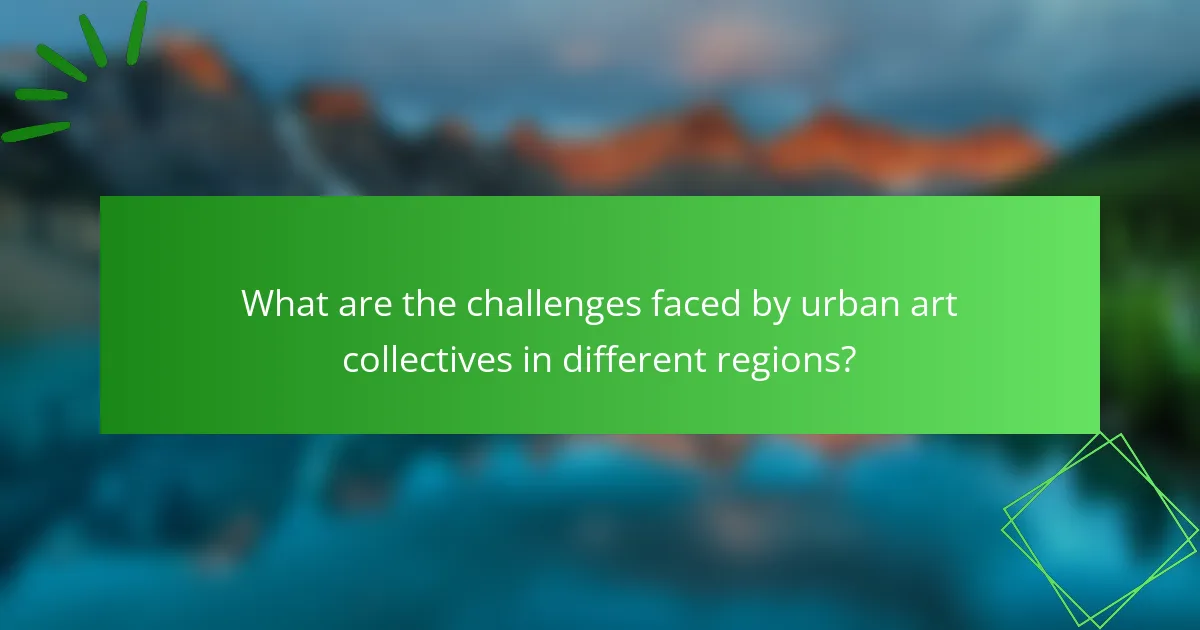
What are the challenges faced by urban art collectives in different regions?
Urban art collectives face numerous challenges that vary by region. These challenges include funding limitations, regulatory restrictions, and community engagement issues.
In many urban areas, funding is scarce, making it difficult for collectives to sustain projects. Regulatory restrictions can hinder artistic expression, especially in cities with stringent laws against graffiti or street art. Additionally, building relationships with local communities often proves challenging, as some residents may not understand or appreciate the value of urban art.
Cultural differences across regions can also impact the acceptance and support of urban art. In some places, urban art is celebrated as a vital form of cultural expression, while in others, it may be viewed negatively.
Ultimately, urban art collectives must navigate these diverse challenges to foster cultural exchange and promote artistic innovation.
How do legal restrictions impact urban art collectives?
Legal restrictions significantly limit the activities and expression of urban art collectives. These regulations can hinder artistic innovation and cultural exchange by imposing fines, requiring permits, or outright banning certain forms of art. For example, in cities with strict anti-graffiti laws, artists may feel pressured to work in secrecy, reducing public engagement with their art.
Additionally, legal constraints can lead to the marginalization of specific artistic styles, often favoring conventional art forms. This creates a unique challenge for urban art collectives, which thrive on spontaneity and community interaction. As a result, the tension between legality and artistic freedom influences the collective’s ability to contribute to urban culture and dialogue.
In some cases, urban art collectives may adapt to these restrictions by collaborating with local governments to create sanctioned public art projects. This rare attribute of cooperation can foster a positive relationship between artists and authorities, ultimately enriching the urban landscape.
Moreover, the impact of legal restrictions varies significantly across different regions, reflecting unique cultural attitudes towards urban art. Collectives in more progressive cities often enjoy greater freedom, while those in conservative areas face stricter limitations.
Which funding models support urban art collectives globally?
Various funding models support urban art collectives globally, including grants, crowdfunding, sponsorships, and public-private partnerships. Grants from arts councils or foundations often provide essential financial backing. Crowdfunding allows communities to directly support projects, fostering local engagement. Sponsorships from businesses can enhance visibility and resources for collectives. Public-private partnerships leverage government resources alongside private investment, promoting sustainable artistic initiatives. Each model contributes uniquely to the vibrancy and sustainability of urban art.
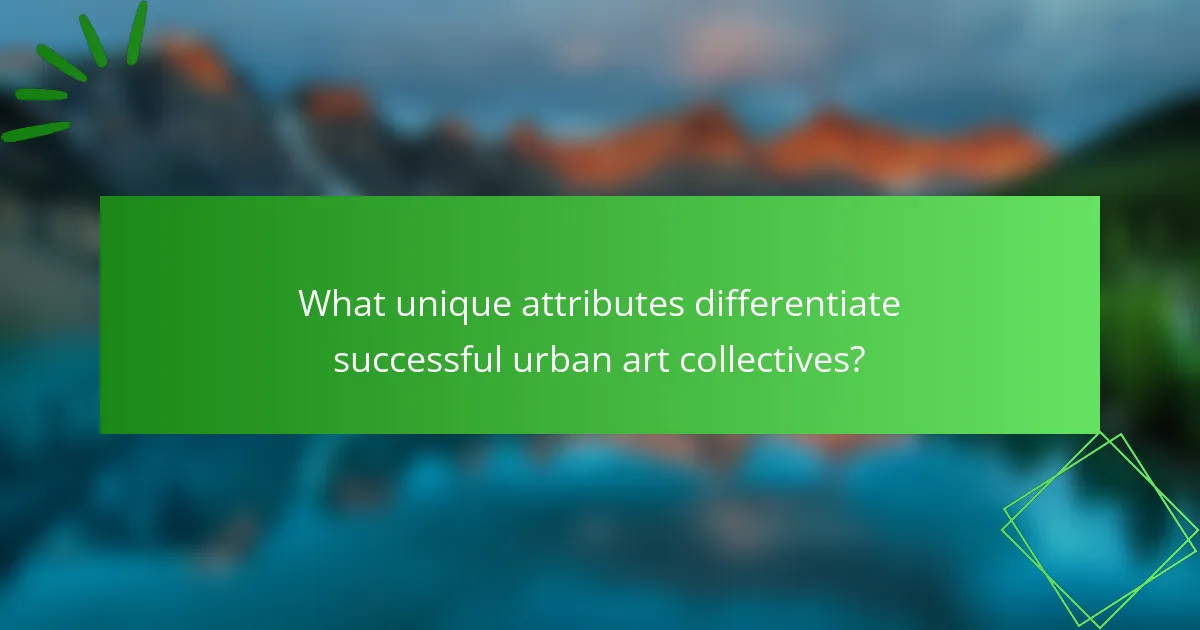
What unique attributes differentiate successful urban art collectives?
Successful urban art collectives are distinguished by their unique attributes, including community engagement, diverse artistic styles, and collaborative projects. These elements foster cultural exchange and innovation.
Community engagement is vital as it connects artists with local populations, allowing for shared experiences and stories. Diverse artistic styles bring a range of perspectives that enrich the collective’s output. Collaborative projects often involve multidisciplinary approaches, merging various art forms and techniques.
Additionally, a unique attribute is the ability to adapt to urban environments, transforming public spaces into canvases that reflect local culture. Rarely, some collectives may focus on social justice themes, making their work not only artistic but also a form of activism. These attributes collectively enhance the impact and relevance of urban art collectives in contemporary society.
How do leadership styles affect the dynamics of urban art collectives?
Leadership styles significantly shape the dynamics of urban art collectives by influencing collaboration, creativity, and community engagement. Transformational leaders often foster innovation and inclusivity, encouraging diverse artistic expressions. In contrast, authoritarian leadership can stifle creativity and limit participation, affecting overall group cohesion.
Effective leadership cultivates an environment where artists feel valued and empowered, enhancing cultural exchange. For instance, collectives led by democratic leaders tend to thrive on shared decision-making, leading to richer artistic outcomes. Unique leadership attributes, such as emotional intelligence, can further enhance collective motivation and artistic synergy.
Research indicates that urban art collectives with adaptive leadership styles are more resilient, effectively navigating challenges and driving artistic innovation. By prioritizing collaboration and open communication, these leaders facilitate a dynamic interplay between artists and their communities, ultimately enriching the urban cultural landscape.
What specific artistic styles emerge from prominent urban art collectives?
Prominent urban art collectives inspire diverse artistic styles, including street art, muralism, and graffiti. These styles reflect cultural narratives and community engagement. For example, collectives like the Bushwick Collective emphasize vibrant murals that transform neighborhoods. Unique attributes include collaborative projects that blend various artistic techniques, fostering innovation. Rare styles emerge from specific local influences, showcasing regional heritage through urban art.

How do urban art collectives impact local economies?
Urban art collectives significantly boost local economies by fostering creativity and attracting tourism. They create jobs, support local businesses, and enhance community engagement. For instance, cities with vibrant urban art scenes often see increased foot traffic, which benefits restaurants and shops. Additionally, these collectives promote cultural exchange, making neighborhoods more appealing to residents and visitors alike. As a unique attribute, urban art can transform neglected spaces into cultural landmarks, further driving economic growth.
What are the measurable benefits of urban art on community development?
Urban art significantly enhances community development by fostering cultural exchange and driving artistic innovation. It creates vibrant public spaces that encourage social interaction and community pride.
Research shows that urban art initiatives can lead to increased local business activity, as aesthetically pleasing environments attract visitors. For example, neighborhoods with murals and public art installations often see a rise in foot traffic, benefiting local shops and restaurants.
Moreover, urban art promotes inclusivity by giving voice to diverse communities. Artists from various backgrounds collaborate, resulting in artworks that reflect the community’s identity. This collaborative approach strengthens social ties and fosters a sense of belonging.
Additionally, urban art can serve as a catalyst for community engagement. Projects often involve residents in the creative process, empowering them and enhancing their investment in local development. This participatory aspect can lead to sustained community involvement in other civic activities.
How do urban art collectives attract tourism and engagement?
Urban art collectives attract tourism and engagement through vibrant public installations and community-driven events. These collectives often organize festivals that showcase local talent, drawing visitors eager to experience unique art forms.
Collaborations with local businesses enhance visibility and create immersive experiences, fostering cultural exchange. For instance, guided tours highlight the stories behind the artworks, deepening visitor connection and appreciation.
Social media campaigns amplify reach, allowing urban art collectives to engage with a global audience. This digital presence encourages tourists to explore urban art scenes, resulting in increased foot traffic and local economic benefits.
The unique aspect of urban art collectives lies in their ability to transform public spaces, making art accessible and relevant to diverse communities. This innovation not only attracts tourists but also inspires local artists to contribute to the evolving cultural landscape.
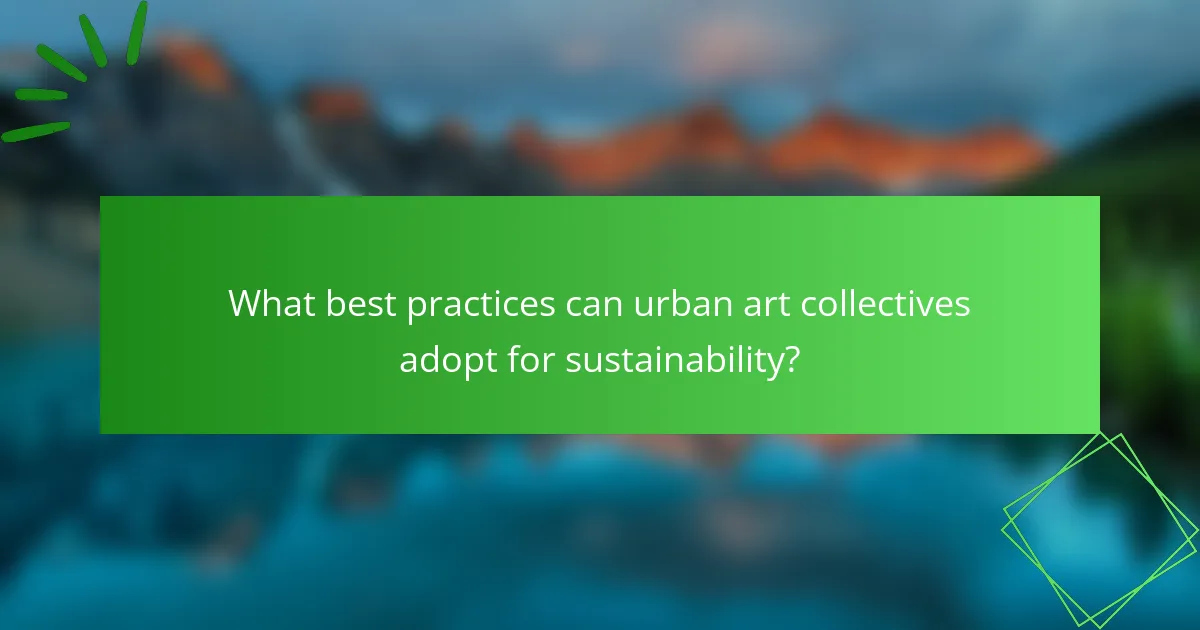
What best practices can urban art collectives adopt for sustainability?
Urban art collectives can adopt several best practices for sustainability. They should prioritize community engagement to ensure local support and participation. Collaborating with local businesses can provide resources and visibility. Utilizing eco-friendly materials reduces environmental impact. Establishing partnerships with other cultural organizations fosters artistic innovation. Lastly, implementing educational programs promotes awareness and appreciation of urban art.
How can urban art collectives effectively engage with local communities?
Urban art collectives can effectively engage with local communities by fostering collaboration and inclusivity. They should prioritize community input in projects, ensuring that artworks reflect local culture and values. Hosting workshops and events encourages participation and builds relationships.
Additionally, creating public art installations can transform spaces and spark dialogue. By partnering with local organizations, collectives can amplify their impact and reach diverse audiences. Engaging in social issues through art can also resonate with community members, enhancing relevance and connection.
Lastly, utilizing social media platforms allows for broader outreach and real-time interaction, inviting community feedback and participation. This approach not only enhances visibility but also strengthens community bonds through shared artistic experiences.
What common mistakes should urban art collectives avoid?
Urban art collectives should avoid common mistakes that hinder their impact and effectiveness. Failing to establish clear communication can lead to misunderstandings among members. Ignoring local culture may alienate the community and diminish relevance. Lack of collaboration with other artists can stifle innovation. Neglecting to document and promote their work limits visibility and potential support. Lastly, not addressing legal issues regarding public art can result in costly setbacks.

